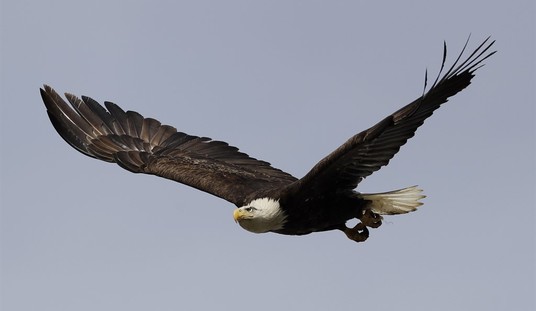Japan is getting back in the power projection business in a way it hasn’t been since 1945, but in the present time, Japanese naval forces will work in a combined effort with U.S. forces.
Later this month, U.S. Marine aviators flying stealthy F-35B strike jets will conduct flight operations from the deck of the Japanese Maritime Self-Defense Force warship, JS Izumo.
The Marines have yet to announce exactly which unit(s) will be working with the Japanese, or how many pilots and planes will be sent to Izumo, but I can tell you with complete confidence that this is a Very Big Deal.
Before getting to that, you’ll need some background on the Izumo itself, which is a strange beast.
Named after a storied Imperial Japanese cruiser from 1900, when the Izumo was launched in 2013, the first thing almost anyone said about the so-called “helicopter destroyer” was that it looked an awful lot like an aircraft carrier.
What I wrote at the time was, and I quote, “Oh, look — Japan went and built itself a baby aircraft carrier.”
With about 20,000 tons of displacement, the modern-day Izumo is about the same size as the World War II-era USS Enterprise carrier. Izumo is too small to launch modern naval jets like the F/A-18, but the F-35B is a vertical and/or short take-off and landing (V/STOL) aircraft that the Izumo could easily launch.
But mostly it was that flight deck that made people say, “Sure, that’s just a destroyer. Sure.”
Tokyo, however, had to at least pretend that Izumo, and her sister ship, Kaga (not-so-subtly named after the WWII aircraft carrier), would be used for defensive operations like antisubmarine warfare and humanitarian missions. The reason is simple: Aircraft carriers are meant to project power far beyond one’s own shores, and the last time Japan was in the power-projection game, we ended up with little things like the Second World War.
Recommended: Terrifying: Biden Is Nominating Soviet-Trained Radicals Now
Japan’s neighbors, understandably, are still a little sensitive about Japan’s military capabilities, which is why instead of having an “army” and “air force” and a “navy,” Japan calls them “Self Defense Forces.”
Prickly feelings aside, once the Marine version of the F-35 became available, there would be nothing stopping Japan from reinforcing the flight deck and almost instantly turning their “destroyers” into light aircraft carriers armed with fricken stealth fighters — and that’s exactly what Japan is doing.
Last year, Japan modified the Isumo’s flight deck to handle the heat from the F-35B’s vertical thrust, and final modifications to the ship’s interior will be made starting in 2024. Kaga’s conversion is expected to be completed sometime this year or next.
Japan has already ordered 42 F-35Bs, enough to fill the flight decks of both the Izumo and Kaga, plus spares.
But Japan hasn’t conducted carrier operations since 1945, which is where the U.S. Marines come in.
By conducting air operations with US Marine jets off the Izumo, Japanese officers and sailors will re-learn the lessons of their great-grandfathers sailing under the Imperial flag.
As the Japanese Navy — ahem, the Japanese Maritime Self-Defense Force — takes delivery of the F-35B, the pilots will be able to train up with shipmates who will, by then, presumably be up to speed on air ops.
This won’t happen overnight, but once Kaga and Izumo are fully converted and the F-35B squadrons are good to go, Japan will have the ability to project power almost anywhere in the Pacific or Indian oceans.
As I said, this is a Very Big Deal, particularly for mainland Communist China — and its imperial ambitions that now stretch across the entire Indian Ocean Basin.
Beijing is none-too-pleased, having already warned Japan to “act cautiously” back when Tokyo was merely considering (or probably just pretending to consider) converting both Izumo-class ships. Japan, however, is directly threatened by China’s unprecedented peacetime naval buildup and is full speed ahead on building and sailing the right kind of aircraft carriers for its needs.
A couple of Japanese aircraft carriers can ruin your whole day, as the world learned the hard way in the late 1930s and early ’40s.
Only this time, the Japanese carriers are on our side.
Nice to have you on board, fellas.










Join the conversation as a VIP Member